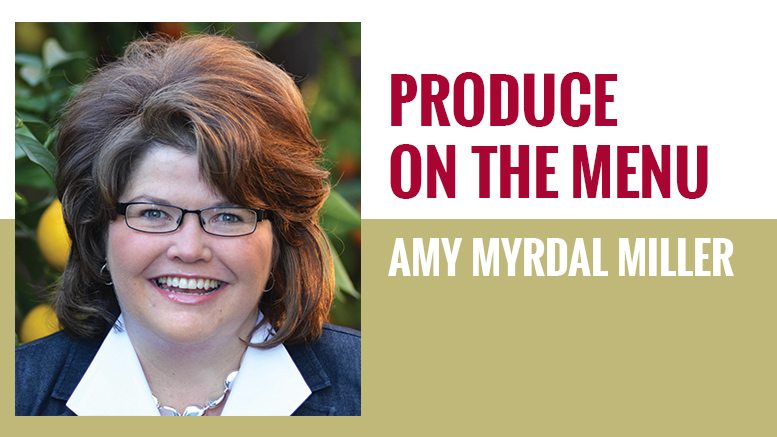The Future of Carbon Labeling in the Foodservice Industry
February 2, 2022 | 3 min to read
During a recent Zoom meeting, foodservice leaders discussed implementing carbon labeling on menus to promote lower carbon food choices. Concerns arose about the accuracy of labeling fruits and vegetables as inherently low carbon, especially considering practices like soil tilling that can release carbon. With escalating production costs and labor shortages, the viability of U.S. producers is at stake. Balancing consumer demands with financial realities is crucial for sustaining the foodservice industry and producers alike.

Originally printed in the December 2021 issue of Produce Business.
I was on a Zoom meeting recently with foodservice leaders from various sectors, and two colleagues mentioned they are working towards carbon labeling on menu items to help their customers make lower carbon food choices. I was a shocked and saddened that these leaders’ companies are using a single metric related to sustainable eating habits. Both said this would be great for fruit and vegetable consumption since they are “lower carbon foods,” but is that really true, accurate, or evidence-based? Let’s look at some facts.
Trees Capture Carbon from the Atmosphere
If you’re growing fruit on trees, you can make some claims about how much carbon your orchards capture, but will that claim lead to people asking about how much water your trees use? The California Almond industry has been carefully crafting their sustainability story for many years, focusing on lifecycle assessments. According to the almond Board of California’s website, “…the almond Life Cycle Assessment (LCA) model has been updated to account for changing resource and infrastructure conditions in California’s Central Valley growing region, the availability of new and updated data from other ABC-funded research projects, as well as updated life cycle inventory (LCI) and other data sources, agronomic response (yield and biomass production) to orchard inputs and management practices, and to quantify a full range of environmental impacts (beyond energy use, global warming potential, and criteria pollutants as reported in the previous LCA model).” This type of thoughtful, disciplined approach has significant merit, but it’s difficult to communicate to the average consumer. Shoppers and diners want easy answers to help them quick decisions.
Annual Vegetable Crops That Require Cultivation Release Carbon
Tilling the soil releases carbon into the atmosphere. This, along with the fossil fuel that is burned to run machinery for tilling, planting, weeding, and harvesting as well as transportation from field to final retail or foodservice outlet, starts to tell a more negative story about vegetables and carbon emissions. Will crops like soybeans for edamame that can be grown with no-till production practices become more desirable for foodservice operations and their carbon-conscious diners? This seems ridiculous, but so do the aspirational demands of some foodservice operations.
Demands That Impact Production Practices Cost Money
Foodservice operators are stressed by labor shortages and increasing labor costs. The same is true for fruit and vegetable producers. In fact, nearly every input cost is increasing in the produce industry, yet few buyers are willing to pay more. Where does this leave producers when it comes to long-term financial stability? If production costs in the U.S. become unbearable, and more and more companies move to production in other countries and parts of the world, I wonder if foodservice companies are willing to include transportation costs when making carbon claims?
Yes, I worry a lot about these issues. I want to see U.S. fruit and vegetable producers remain competitive and financially strong. I also want to see the U.S. foodservice industry recover from the significant financial setbacks of the pandemic. But at this point, it seems as if consumer-based demands of foodservice and financial realities of producers are at odds. What will it take to “meet in the middle” and ensure both sides remain competitive and financially healthy?

Amy Myrdal Miller, MS, RDN, FAND is a farmer’s daughter from North Dakota, award-winning dietitian, culinary nutrition expert, and founder and president of Farmer’s Daughter Consulting, Inc. She is consultant for the Produce for Better Health Foundation, a member of the Texas A&M AgriLife External Advisory Board, and a member of the Bayer Vegetable Seeds Horticultural Advisory Council. You can learn more about her business at www.farmersdaughterconsulting.com, and you can follow her insights on food and flavor on social media @AmyMyrdalMiller
18 of 20 article in Produce Business February 2022

